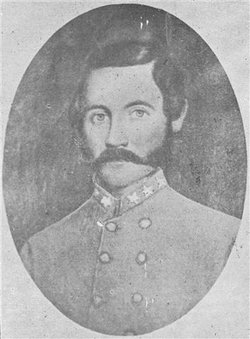“$1000 for an hour of sleep”: Morgan’s Raiders in Glendale, OH

After successfully making their way around Cincinnati with limited opposition, General John Hunt Morgan and his raiders rode into the sleepy town of Glendale, OH. The 800-900 residents of Glendale—unaware of the impending danger—rested soundly when they were awoken by the sound of thousands of hoof beats. Some residents commented on the raiders’ strange appearances, saying that many were wearing women’s hats and veils. The apparel, though odd, protected the raiders from the clouds of dust stirred up by the horses as they traveled quickly across the dirt roads.
As quickly as the raiders arrived, they were just as quick to leave. The entire experience for those in Glendale lasted a mere four hours without a single shot fired. The raiders captured a handful of fresh horses and raided many of the town stores and residents’ kitchens, taking supplies as they saw fit.

Two of the rebel raiders sought rest as they were physically unable to continue the accelerated pace on the all-night journey. Two young Glendale boys guided the weary soldiers to a nearby barn, owned by the Wright family. After learning about the two rebels in the barn, Mrs. Wright felt sorry for them and provided food and sanctuary to them until they were able to travel again.
Nearer Glendale sat the small community of Sharonville (at the time referred to as Sharon). The two communities were only separated by 3 miles. As such the bulk of the rebel raiders were still passing through Glendale when the first confederate entered Sharonville. In a letter dated July 19, 1863 (five days after the raiders passed through), David Hulse, a local resident, wrote about the encounter, saying: “We were awakened early Tuesday morning to find the enemy in our midst. They were several thousand. They were in our stables, stores and kitchens. They were about four hours passing through.” He went on to describe three local men who pursued the rebels and collected horses that had been discharged. The men were eventually captured by the raiders after getting too close to the rear guard. The Confederates forced the men to ride with them for 20 or so miles before being told to dismount and return home on foot.
Despite uniting their forces just hours earlier, Morgan’s men began spreading out as they continued their trek east. Each group continued to split time and time again, taking different roads and heading in different directions. In the darkness, they scattered across a six-mile-wide area. It is not known if this division was on purpose. Colonel Duke describes the night march saying:
“In this night march around Cincinnati, we met with the greatest of difficulty in keeping the column together. General Morgan, who rode at the head of the second brigade, marched in advance. But Cluke’s regiment right at the rear of the first brigade straggled, halted and delayed. A great gap would thus open between the rear of one brigade and the advance of the other. We who were behind were forced to grope our way as best we could. The night was intensely dark. When the night is calm, the dust kicked up by the passage of a large number of horses will remain suspended in the air for a considerable length of time, and it will also move slowly in the same direction that the horses which have disturbed it have traveled. We could trace it by noticing the direction in which the dust settled or floated. We could also trace the column by the slaver dropped from the horses’ mouths.”
Of course, following the dust and slaver droppings simply did not keep the column together. Gen. Morgan followed a southeastern route while Col. Duke headed northeast.

One of the greatest threats to the rebel raiders was exhaustion. Colonel Leroy S. Cluke recalled riding up to Colonel Adam Johnson, telling him, “I’d give a thousand dollars for an hour’s sleep!” As the story goes, Col. Johnson reached over, grabbed the reins of Cluke’s horse, and almost instantly Col. Cluke leaned forward over his saddle and fell into a deep slumber.
But with no time to rest, the raiders continued on. Col. Duke continued northeast, heading towards Loveland, OH, while Gen. Morgan and his column continued south with their eyes set on Camp Dennison.
As mentioned in previous posts regarding Morgan’s Raiders, General Hobson and his Indiana home guards were still in pursuit. At 6:00 AM on July 14, Hobson’s men moved out of Harrison, OH. Only 30 miles separated Hobson from Morgan’s column. Unfortunately, for Hobson and his men, the raiders left very little of use in their wake. Hobson’s horses were worn out with no hope of finding fresh mounts. Hobson would not be able to overtake Morgan and his men unless the Confederates were checked from the front.
Enjoyable read.